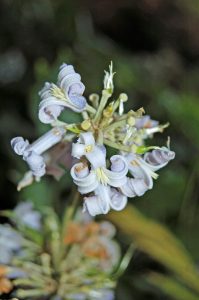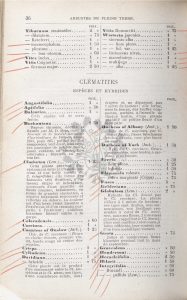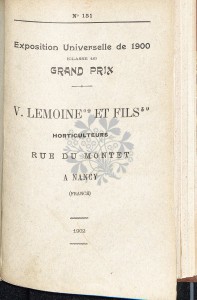 When working through endless spreadsheets of data occasionally something jumps out because it looks odd. Scanning down the list of living Clematis at RBGE the accession number 19021013 set itself apart from the several hundred others. Once you know how to read our accession numbers you’ll understand why.
When working through endless spreadsheets of data occasionally something jumps out because it looks odd. Scanning down the list of living Clematis at RBGE the accession number 19021013 set itself apart from the several hundred others. Once you know how to read our accession numbers you’ll understand why.
With a few exceptions, the first 4 digits are the year that a plant entered the collection and the last 4 is the sequential record number for that year. This particular plant, Clematis tubulosa, was the one thousand and thirteenth plant that came into the collection in 1902. So if I did my sums correctly then the plant is 111 years old!
Going back to the database there were some other bits of interesting information. The plant was recorded as being in our collection on the 15th of April 1902; it was called Clematis davidiana when it arrived, this name is now considered a synonym of Clematis tubulosa and finally the plant was sourced from Messrs. Lemoine et fils, Horticulteurs, a French plant nursery.
The RBGE library holds a fantastic collection of old horticultural trade catalogues from the UK and Europe, including a set of catalogues from Messrs. Lemoine. Our 1902 Lemoine et fils. catalogue has many red marks on its pages. As you see below the Clematis pages are heavily marked. The curator at the time, A. D. Richardson, must have been looking to invest in some Clematis for the collection. Clematis davidiana cost us 1.25₣. How is that for value for money?!

 Looking back in to the name Clematis davidiana was well worth the effort. The original description of the name appears in the Revue Horticole from 1867 and gave the history of how the plant came to be named.
Looking back in to the name Clematis davidiana was well worth the effort. The original description of the name appears in the Revue Horticole from 1867 and gave the history of how the plant came to be named.
The seeds of Clematis davidiana were sent in 1863 to the Museum National d’Histoire Naturelle by Père David (Jean Pierre Armand David), a French Missionary and botanist, from collections made near to Peking (Beijing). Plants were successfully raised and flowered for the first time on the 20th of September 1866 in the Jardin des Plantes, the main botanic garden in France and a department of the Museum. The plant was named in David’s honour by the French botanist Joseph Decaisne and Bernard Verlot.
Our earliest catalogue from Messrs. Lemoine in 1896 lists it as ‘Clematis davidiana (Museum)’. This suggests that the plant they originally offered for sale came from the Museum National d’Histoire Naturelle. This does make a good deal of sense as new introductions were passed around and found their way into the horticultural trade. This species is also very easily vegetatively propagated from its spreading rhizomes.
Knowing that this species is so easily propagated vegetatively explains how we’ve kept the same plant going for over one hundred years. It also raises the possiblity that our 111 year old plant is a propagule from one of those original plants that flowered in Paris in 1867 from the seed sent by Pére David in 1863 and therefore means our plant is closer closer to 148 years old!
Amazing.
